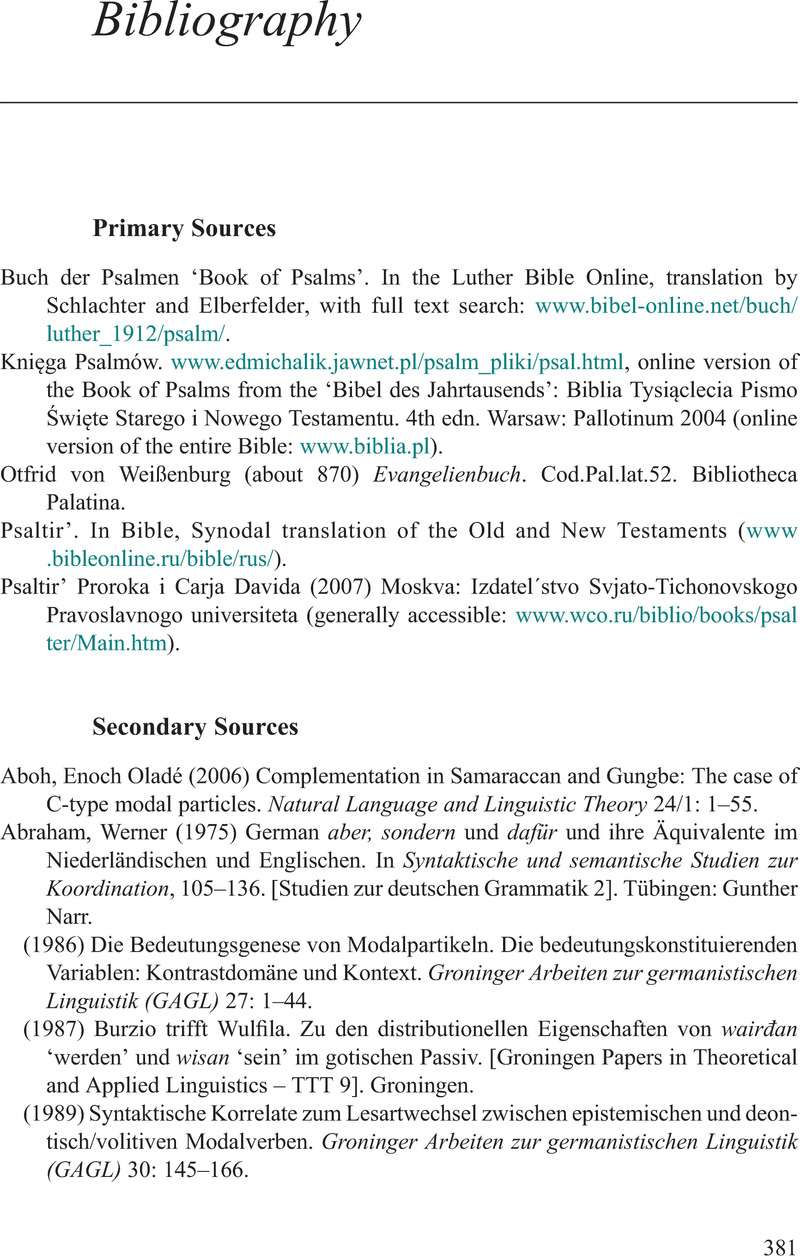Book contents
- Modality in Syntax, Semantics, and Pragmatics
- Cambridge Studies in Linguistics
- Modality in Syntax, Semantics, and Pragmatics
- Copyright page
- Dedication
- Contents
- Tables
- Preface
- Acknowledgments
- Abbreviations and Special Symbols
- Introduction
- I Modes of Modality
- II Verbal Modality
- III Adverbial Modality
- IV Covert Modality
- Bibliography
- Index
- References
Bibliography
Published online by Cambridge University Press: 06 February 2021
- Modality in Syntax, Semantics, and Pragmatics
- Cambridge Studies in Linguistics
- Modality in Syntax, Semantics, and Pragmatics
- Copyright page
- Dedication
- Contents
- Tables
- Preface
- Acknowledgments
- Abbreviations and Special Symbols
- Introduction
- I Modes of Modality
- II Verbal Modality
- III Adverbial Modality
- IV Covert Modality
- Bibliography
- Index
- References
Summary

- Type
- Chapter
- Information
- Modality in Syntax, Semantics and Pragmatics , pp. 381 - 415Publisher: Cambridge University PressPrint publication year: 2020

